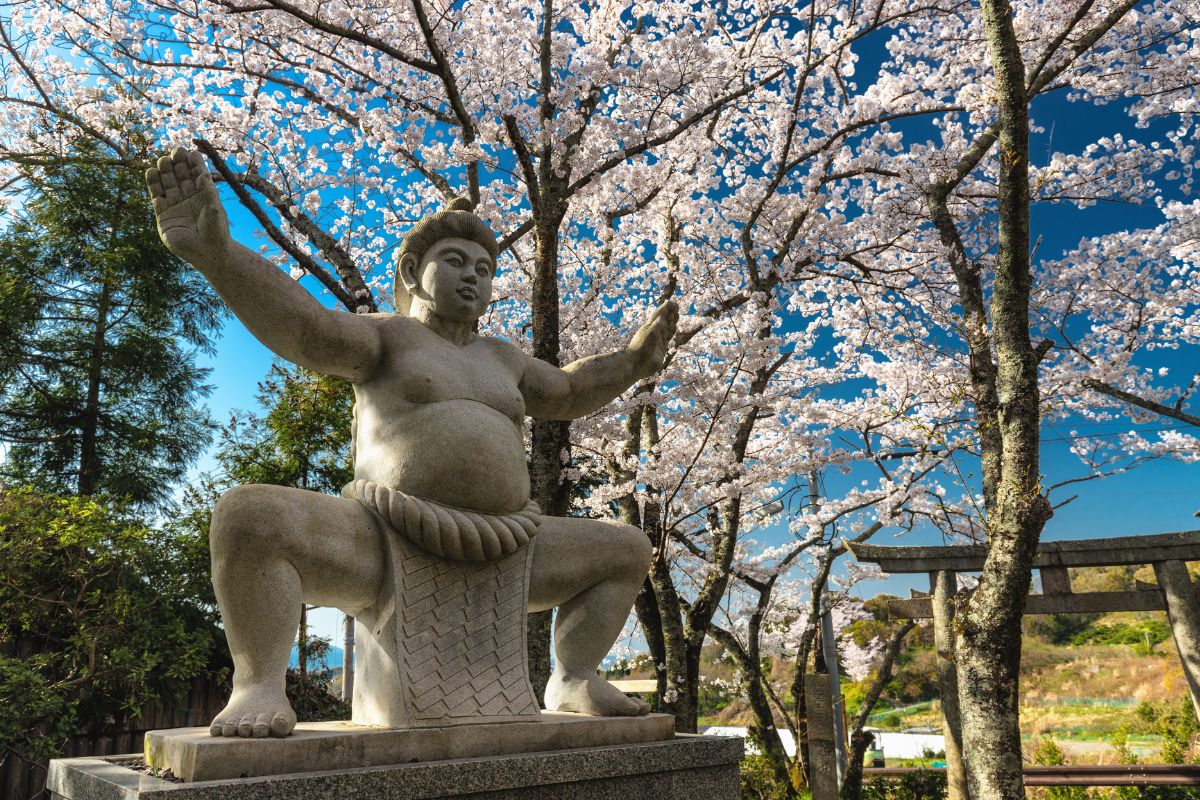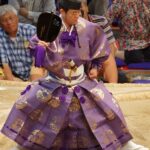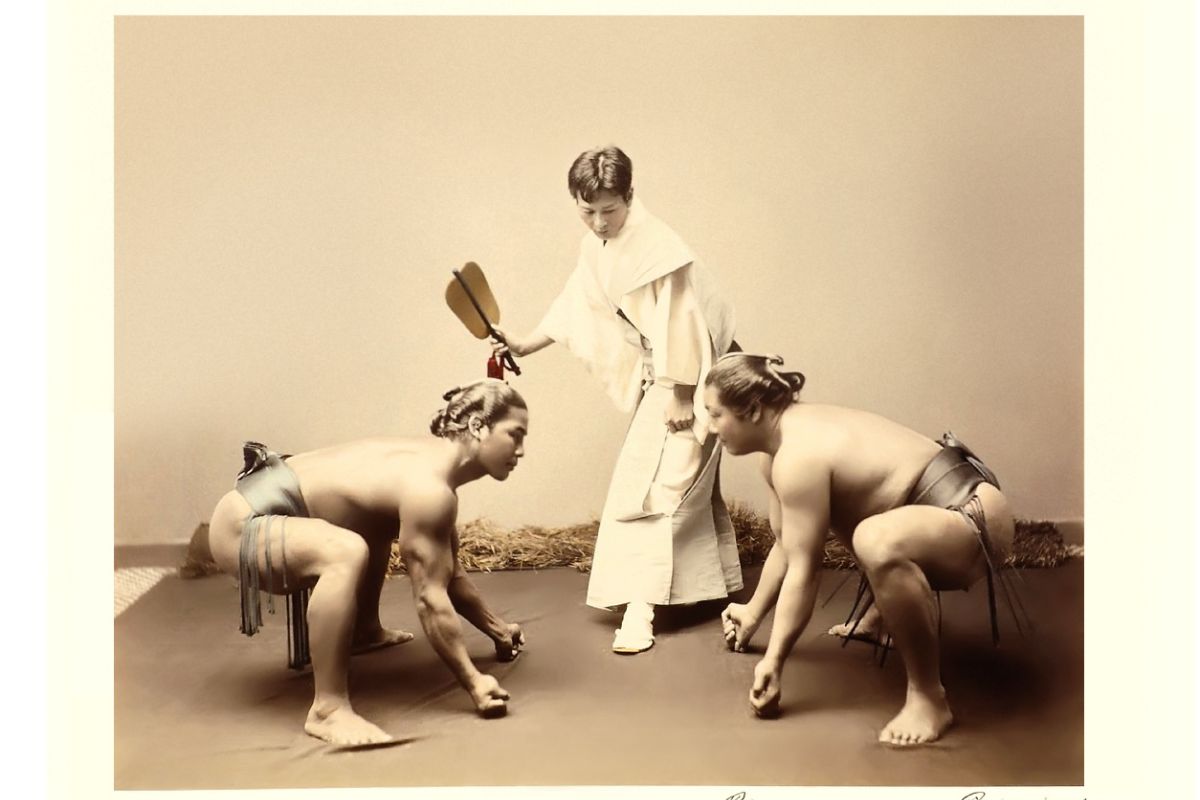Sumo became a national sport in Japan in 1909 but has been a 1,500-year-old ritual and has become a part of Japanese history. Like a lot of sports, you can expect specific clothing to be worn by sumo wrestlers which can vary depending on their rank.
The mawashi should be commonly worn amongst most sumo wrestlers and is a loincloth wrapped around their bodies.
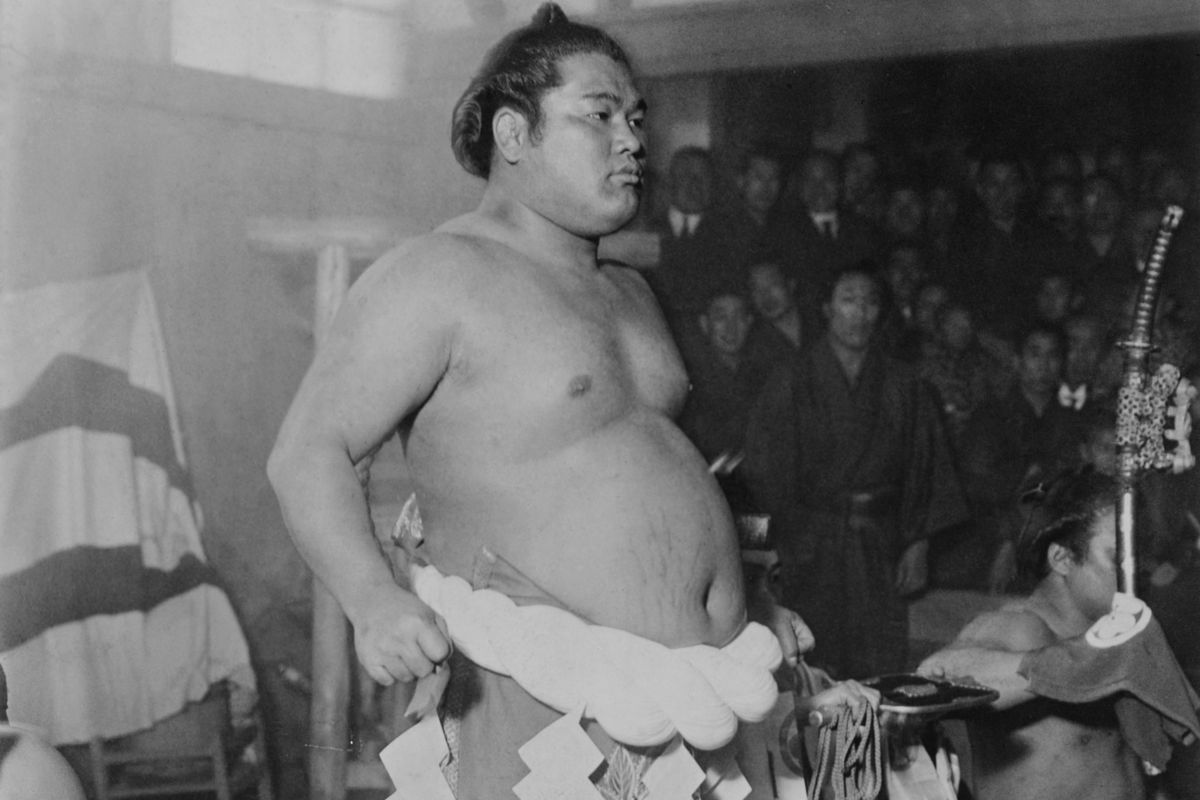
For the sumo wrestlers who compete at higher ranks, you can expect them to wear a keshō-mawashi during the ring entrance ceremony too.
In this guide, we will look at what a sumo wrestler wears including the mawashi, the various types of mawashi, the keshō-mawashi, and the tsuna.
The Mawashi
During official tournaments and sumo training sessions, you can expect a sumo wrestler, known as a rikishi, to wear a mawashi.
This is an official garment and a loincloth that comes with a belt and handles designed for opponents to grab onto and tackle each other.
The measurements for a regular mawashi are 0.9 meters wide and nine meters long once unwrapped. A single mawashi should also weigh around five kilograms and is wrapped around the wrestler a few times then fastened with a knot at the back.
The mawashi can be worn several different ways, occasionally in an effort to beat an opponent. That could be by wearing it loosely, tightly, or even wetting it to make gaining a grip more elusive.
Ensuring that the mawashi is put on properly could go a long way to determining if the sumo wrestler wins or loses the tournament they are competing in. Should it come off during a match, that counts as an automatic disqualification.
Types Of Mawashi
Depending on the sumo wrestler’s ranks, there is a range of mawashi that can be worn. The mawashi can differ in design, material, and color. Nevertheless, every rikishi will wear a canvas mawashi during their training sessions.
Black Cotton Mawashi
The makushita, or lower-ranked rikishi, will wear black cotton mawashi when they compete in tournaments. However, other sumo wrestlers can choose to wear the color theme of their specific training school.
Even the way that the makushita wears their mawashi is crucial, it should be tucked below the belt and form a triangle shape.
White Silk Mawashi
Higher-ranked rikishi, known as sekitori, will wear white silk mawashi to distinguish themselves from makushita.
Silk is certainly a more prestigious material and the sekitori will tuck the front end of their mawashi to the top of their white belt and create a shape like a toilet paper roll.
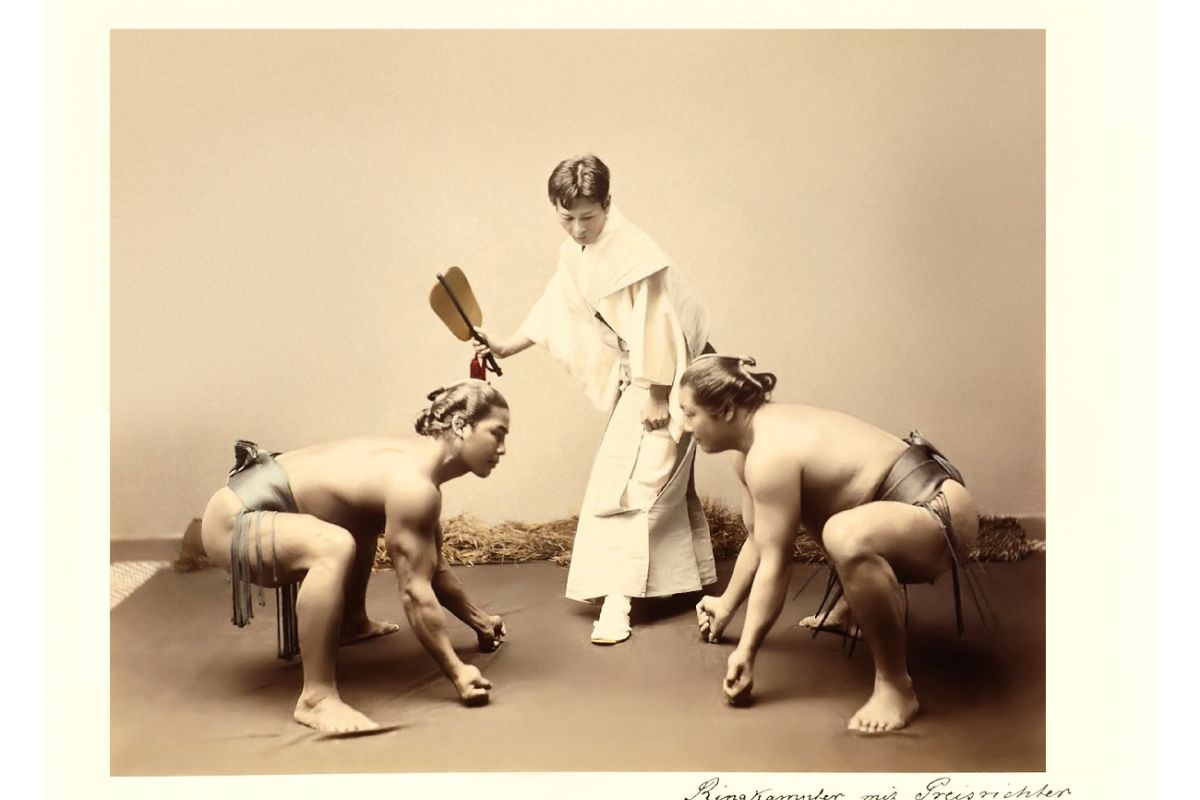
The Keshō-Mawashi
Sumo wrestlers that feature in the two upper divisions, including makuuchi and jūryō, are permitted to wear another, ceremonial apron. This is known as a keshō-mawashi and is worn during the ceremony when they enter the ring.
The keshō-mawashi is a version of silk belt that will open out at a single end to become a large apron which features various embroidered effects.
There will also be thick tassels featured at the bottom of the keshō-mawashi and more modern ones may include an advertisement or a competitor’s national flag should they be foreign to Japan.
You can expect the highest rank in sumo, the yokozuna, to have their keshō-mawashi in three matching sets. One is worn by the sumo wrestler while a further two are worn by the wrestler’s assistants.
These assistants are known as tsuyuharai and tachimochi and the matching keshō-mawashi is worn during the ring entrance ceremony.
The Tsuna
A grand sumo champion, better known as a yokozuna, will wear a tsuna. This is made of a rope that comes with five strands, each decorated with diamond-shaped paper rectangles.
They will wear the tsuna while making private entrances in official tournaments. The tsuna also represents the yokozuna’s higher status in society as they are close to demigods in Japan and allowed to participate in several religious ceremonies.
Outside The Ring
While there are certain rules relating to what a sumo wrestler can wear in the ring, there are also rules to what they can wear in public.
That typically means traditional Japanese clothing such as dressing gowns during the time spent from their heya and stables.
A rikishi is only permitted to wear a yukata or a kimono when they are enjoying everyday life in public and not competing or training.
The yukata is a simpler, more humble version of the kimono and will be worn by lower ranking wrestlers while the higher division wrestlers will wear the kimono.
When elite rikishi leave the heya, they will wear a silk kimono befitting of their rank in either dark blue or purple. Then there are sekitori, the highest-ranking sumo wrestlers, who are allowed to wear embellished kimonos in and out of the heya.
Final Thoughts
Sumo wrestlers wear a loincloth known as a mawashi when competing. The mawashi forms traditional Japanese attire which is barely ever washed as it is believed that the water can weaken the fabric and remove any good luck.
There are different types of mawashi including the keshō-mawashi for sumo wrestlers in the two upper divisions. Lower-ranked rikishi will wear black cotton mawashi while higher-ranked rikishi wear white silk mawashi to prove their higher status.
Frequently Asked Questions
Why Do Sumo Wrestlers Wear Various Mawashi?
Mawashi can be worn to ensure that higher-ranking sumo wrestlers are distinct from the rest of the competitors. The mawashi itself is a minimalist form of clothing that allows the sumo wrestler freedom of movement.
It should only cover the wrestler’s genitals and has been kept to maintain Japanese culture, even though modern sport apparel is lighter.
Sumo wrestlers essentially wear mawashi as a commitment to the gods that they are not committing fraud or hiding weapons.
Are Sumo Wrestlers Allowed To Wear Anything Underneath Their Mawashi?
Sumo wrestlers wear the mawashi as minimalist attire and they are not permitted to wear anything underneath. Essentially, it is forbidden to wear anything beneath the mawashi due to its historic status.
Wearing undergarments below the mawashi would undermine its significance. Put simply, the mawashi is designed to cover the sumo wrestler’s genitals and that’s about it.
- 16 Best Websites To Watch Japanese Movies With English Subtitles - May 11, 2023
- Is ZIPAIR The Best Airline For Traveling To Japan? - May 11, 2023
- Ryu Murakami Vs Haruki Murakami – Which One Should You Read? - May 11, 2023

